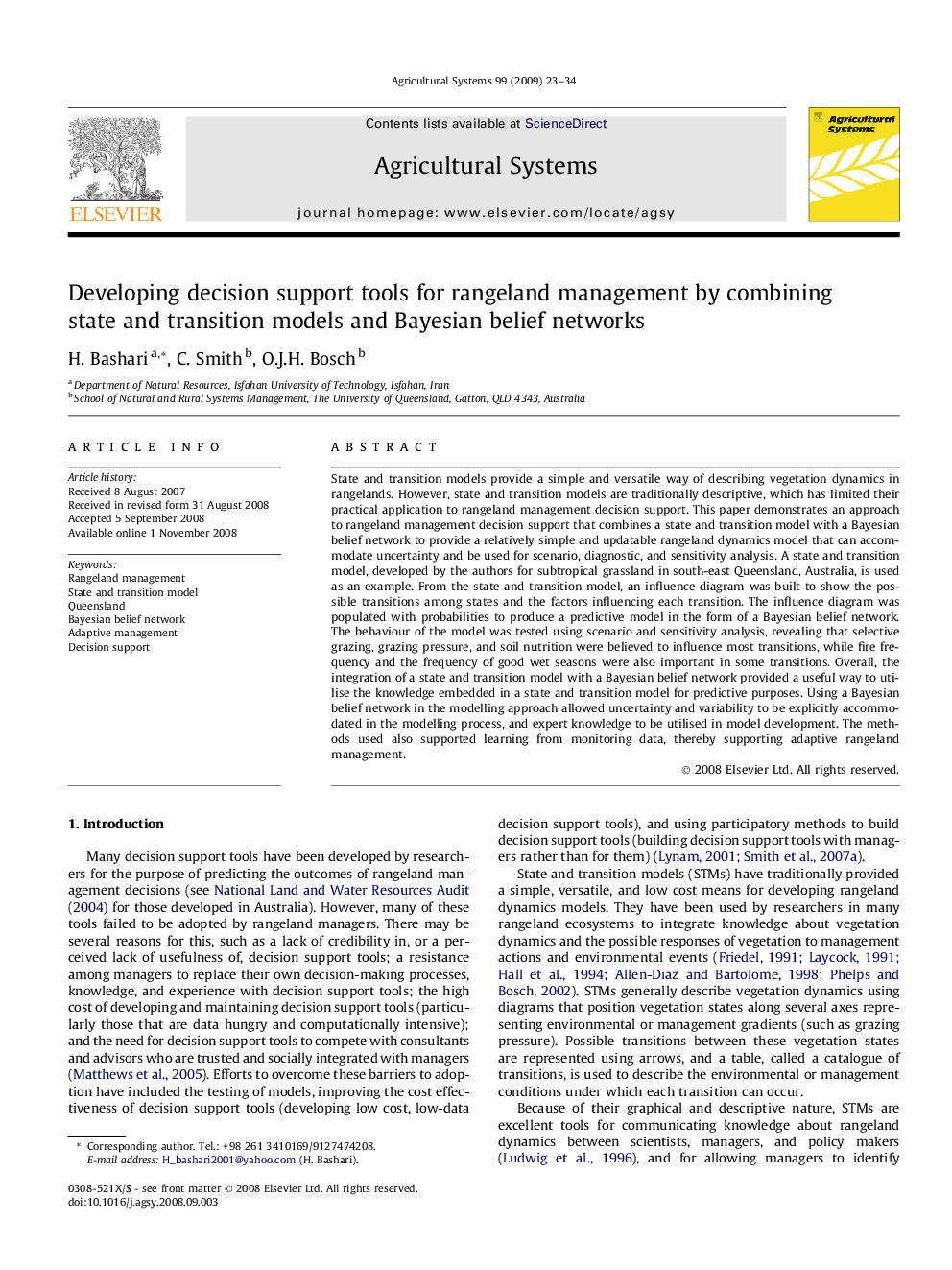| کد مقاله | کد نشریه | سال انتشار | مقاله انگلیسی | نسخه تمام متن |
|---|---|---|---|---|
| 4491767 | 1317879 | 2008 | 12 صفحه PDF | دانلود رایگان |

State and transition models provide a simple and versatile way of describing vegetation dynamics in rangelands. However, state and transition models are traditionally descriptive, which has limited their practical application to rangeland management decision support. This paper demonstrates an approach to rangeland management decision support that combines a state and transition model with a Bayesian belief network to provide a relatively simple and updatable rangeland dynamics model that can accommodate uncertainty and be used for scenario, diagnostic, and sensitivity analysis. A state and transition model, developed by the authors for subtropical grassland in south-east Queensland, Australia, is used as an example. From the state and transition model, an influence diagram was built to show the possible transitions among states and the factors influencing each transition. The influence diagram was populated with probabilities to produce a predictive model in the form of a Bayesian belief network. The behaviour of the model was tested using scenario and sensitivity analysis, revealing that selective grazing, grazing pressure, and soil nutrition were believed to influence most transitions, while fire frequency and the frequency of good wet seasons were also important in some transitions. Overall, the integration of a state and transition model with a Bayesian belief network provided a useful way to utilise the knowledge embedded in a state and transition model for predictive purposes. Using a Bayesian belief network in the modelling approach allowed uncertainty and variability to be explicitly accommodated in the modelling process, and expert knowledge to be utilised in model development. The methods used also supported learning from monitoring data, thereby supporting adaptive rangeland management.
Journal: Agricultural Systems - Volume 99, Issue 1, December 2008, Pages 23–34